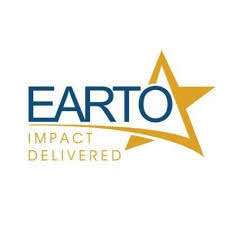Synchronising Open Science and Open Innovation
The last six months show that key priorities of the European Commission in the European Research Area (ERA) need to be synchronised – in particular for Open Innovation and Open Science there seem to be sensible reasons for such a synchronisation. How this can be done with the help of Science 2.0 is outlined in this blogpost.
At the European conference “A New Start for Europe. Opening Up to an ERA of Innovation” in June 2015 European Commissioner for Research, Science and Innovation Carlos Moedas presented the three top priorities of the European Commission in the respective field: Open Innovation, Open Science, and Open to the World (further reading in German: blogpost Open Science: Ein Kernthema für die Europäische Kommission)
Recently, a nice booklet “Open Science 2030” has been published presenting a great scenario about how Open Science will be realised in 2030. However, a long way is still ahead of us.
From an industry perspective, the European Commission (EC) wants to develop the Digital Single Market in Europe which for the most part capitalises on the results of European research and innovation. From a research perspective, opening up the whole research cycle is highly welcomed. But, looking especially at some kind of research data there are discrepancies and tensions between both claims.

Open Innovation and industry-oriented research
Open Innovation is an important component of the foreseen European Innovation System, where all stakeholders need to be involved and create seamless interaction and mash-up for ideas in innovation ecosystems. The latest position paper “Is there still room for Open Innovation
in a Digital Single Market built on Open Science?” of the European Association of Research and Technology Organisations (EARTO) emphasises that Open Innovation encompasses the principles of value creation and value capture (i. e. each participating partner capturing a share of the value created collaboratively).
Today, Research and Technology Organisations (RTOs) seem to be concerned about how to match their mode of co-operation with industry with the challenges foreseen by Open Science and the Digital Single Market as the Digital Single Market relies on open, data-intensive and networked research and Open Science is depicted as the transformation, opening up and democratization of science, research and innovation, often through ICT. EARTO argues for a “balanced” way taking into account the benefits from openness and at the same time taking into account the necessity of a clear competitive edge.

Achieving the balance with Science 2.0
One possible concept for achieving this balance is to take advantage of the possibilities associated with Science 2.0. Science 2.0 describes the changes in research and publication processes brought about by the so called “participatory” web, i. e. the web we experience today involving tools and services that enable participation, collaboration, communication and open discourse. As opposed to Open Science, Science 2.0 does not automatically need to be open – rather Science 2.0 is characterized by the use of participatory web technologies. By definition, these participatory web technologies are not a necessary condition for Open Science. But exactly this combination of Open Science approaches and participatory web technologies can offer sensible solutions for fostering Open Innovation.
European Open Science Cloud as a role model
A good example for this can be seen in the planned European Open Science Cloud. This initiative is designed to combine existing and future data infrastructures, offering secure and seamless access to European researchers for storing, managing and processing data from different sources. We would recommend that it should not be limited to Open Data. Instead, it should provide layers for the work with controlled and sensitive data. Thus researchers could benefit from the use of participatory web technologies (Science 2.0), but will do this in a protected layer of the European Open Science Cloud.
However, one has to keep in mind that this European Open Science Cloud initiative has just been started and that the requirement for Open Science and Open Innovation is already prevalent for RTOs and statements with respect to a “balanced” Open Science approach which seem to be quite vague at present. So there is the danger that RTOs see themselves confronted with the above-mentioned requirements, but at the same time lack the necessary tools and technological infrastructure to ensure a sensible way of engaging in Open Science.

Confidential research data challenges Open science
Apart from the technological perspective there is another aspect that – in our view –influences the notion what a “balanced” approach to Open Science means: The Open Access mandate of the European Commission (EC) that regulates the availability and accessibility of research results stemming from EC funded research projects. It is important that the EC offers an opt-out model allowing projects to keep their research data confidential, be it for privacy issues, securing a competitive advantage or any other legitimate reason.
It has to be clear that Open Access per default does not mean that all data have to be published under an open license right away. Otherwise, European RTOs would have competitive disadvantages in an international market.
In a nutshell: we have to take care that a misunderstanding of the Open Science paradigm does not lead to cutting off (Open) Innovation in Europe.
→ Autoren: Dr. Anna Maria Höfler, Dr. Willi Scholz und Prof. Klaus Tochtermann (ZBW – Leibniz-Informationszentrum Wirtschaft)
How to integrate Social Web Publications Into Digital Libraries
As scholarly blogging is becoming more and more popular, the question of how...
